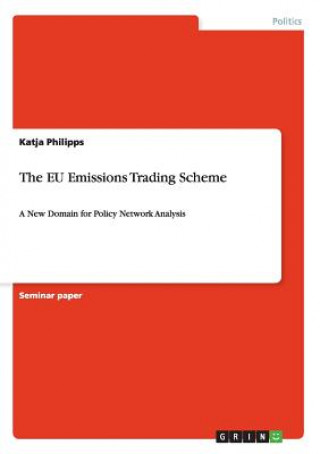
Code: 02143376
EU Emissions Trading Scheme
by Katja Philipps
Seminar paper from the year 2012 in the subject Politics - International Politics - Topic: European Union, grade: 1,0, University of Münster (Institut für Politikwissenschaft), course: European Environmental Politics, language: En ... more
- Language:
 English
English - Binding: Paperback
- Number of pages: 26
Publisher: Grin Publishing, 2013
- More about this

You might also like
-

Art Basel Miami Beach Dec 5-8 2013
68.30 € -

Colonial Psychiatry and the African Mind
61.54 € -

London City Highlights
20.27 € -

Charlton Men
19.45 € -3 % -

Higher Form of Cannibalism?
29.07 € -

Hoehere Qualitat des Testats bei einem Big4-Wirtschaftsprufer?
45.97 € -

Handbuch der Rechtspsychologie
62.87 €
Give this book as a present today
- Order book and choose Gift Order.
- We will send you book gift voucher at once. You can give it out to anyone.
- Book will be send to donee, nothing more to care about.
More about EU Emissions Trading Scheme
You get 105 loyalty points
 Book synopsis
Book synopsis
Seminar paper from the year 2012 in the subject Politics - International Politics - Topic: European Union, grade: 1,0, University of Münster (Institut für Politikwissenschaft), course: European Environmental Politics, language: English, abstract: Due to ever mounting scientific evidence, today neither climate sceptics nor climate believers deny the fact that climate change is occurring and that human activity can be regarded as a prime cause. Uncertainty solely remains about the precise relationship between specific concentrations of particular greenhouse gases most importantly water vapour and carbon dioxide and changes in global temperatures. It is beyond doubt that certain gases in the atmosphere contribute to the so-called greenhouse effect by trapping heat. Human activity like burning carbon-based fuels, but also deforestation and ploughing is intensifying this effect and causing a constant rise in carbon dioxide concentrations. The growing empirical evidence for climate change triggered a global response, even though some authors classify it as meagre (Helm 2008). In 1992, 154 countries joined the United Nations Framework Convention on Climate Change (UN FCCC), to cooperatively consider what they could do in order to limit average global temperature increases and the resulting climate change. The UN FCCC built upon the Intergovernmental Panel on Climate Change (IPCC) established in 1988, an international scientific collaboration entrusted with the task to provide the world with a clear scientific view on the current state of knowledge in climate change and its potential environmental and socio-economic impacts (IPPC n.d.). The UN FCCC finally kicked off the process which culminated in the Kyoto Protocol, adopted in Japan on 11 December 1997 and entering into force on 16 February 2005. The Protocol commits 37 industrialized countries and the European Union (EU) to stabilize their greenhouse gas emissions and sets binding emission reduction targets for a certain period (cf. UN FCCC n.d.). Being of particular relevance for this paper, the Kyoto agreement enabled the European Union Emissions Trading Scheme (EU ETS) to get under way as a prototype for a global emissions-trading regime. The aim of this paper is to have a closer look at the EU ETS and to examine whether the development of the regime can be explained by using the lens of policy network analysis a concept that appears particularly well suited to grasp the essence of multi-level governance in the European Union (cf. Jachtenfuchs 2001:255). The central question is whether the actors involved in the development of the EU ETS can be identified and classified by using policy network analysis as a theoretical framework.
 Book details
Book details
Book category Knihy po anglicky Society & social sciences Politics & government
42.49 €
- Full title: EU Emissions Trading Scheme
- Subtitle: A New Domain for Policy Network Analysis
- Author: Katja Philipps
- Language:
 English
English - Binding: Paperback
- Number of pages: 26
- EAN: 9783656505945
- ISBN: 3656505942
- ID: 02143376
- Publisher: Grin Publishing
- Weight: 45 g
- Dimensions: 210 × 148 × 2 mm
- Date of publishing: 02. October 2013
Trending among others
-

Case Against the Sexual Revolution
16.89 € -21 % -

Wretched of the Earth
10.64 € -18 % -

The Trigger
25.28 € -19 % -

State and Revolution
5.31 € -13 % -

Accidental Superpower
18.42 € -19 % -

My Autobiography
13.20 € -18 % -

Fight Like A Girl
12.28 € -15 % -

Against Civilization
16.58 € -4 % -

Abaddon Ascending: The Ancient Conspiracy at the Center of CERN's Most Secretive Mission
28.15 € -

The Lords of Poverty: The Power, Prestige, and Corruption of the International Aid Business
13.92 € -19 % -

Politics
52.63 € -5 % -

Cold and the Dark
20.16 € -13 % -

Voices from the Contemporary Japanese Feminist Movement
56.93 € -
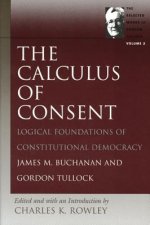
Calculus of Consent
17.09 € -

Mafia Monograph, Part 1 of 4
22.52 € -

Israel Lobby and U. S. Foreign Policy
28.77 € -7 % -

Harm Reduction or Harm Maintenance
32.97 € -

Entropy Of Capitalism
47.30 € -

Red Petrograd
23.54 € -

Troubled Constitutional Future
28.66 € -

Lineages of Modernity - A History of Humanity from the Stone Age to Homo Americanus
46.79 € -

City of Quartz
15.97 € -15 % -

Inventing Vietnam
32.45 € -29 % -

Flash Boys - A Wall Street Revolt
12.89 € -

Lee Kuan Yew
19.75 € -15 % -

Giants
19.96 € -13 % -

Children of the Matrix
18.32 € -15 % -

Queer Encounters with Communist Power
25.80 € -
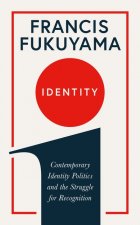
Identity
11.36 € -24 % -

Deep State
16.17 € -21 % -

Next Decade
17.91 € -2 % -

Return of Marco Polo's World
15.25 € -19 % -

Force of Reason
20.98 € -2 % -
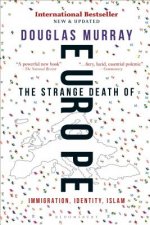
STRANGE DEATH OF EUROPE
20.16 € -6 % -

Political Science For Dummies
19.34 € -20 % -

Yoga of Eating
12.38 € -19 % -

Political Brain
15.35 € -21 % -

GREEN BOOK
7.88 € -23 % -
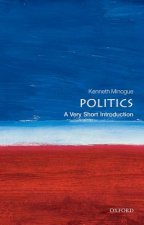
Politics: A Very Short Introduction
10.13 € -23 % -

Out of the Wreckage
20.88 € -20 % -

No Turning Back
12.28 € -23 % -

Urban Warfare in the Twenty-First Century
28.66 € -

Trade Marketing, Category Management, and Shopper Marketing
95.33 € -

Spirit of the Laws
23.85 € -

USAF Military Working Dog Program - Scholar's Choice Edition
30.71 € -
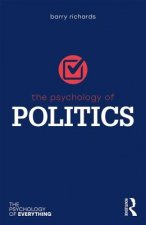
Psychology of Politics
23.34 € -
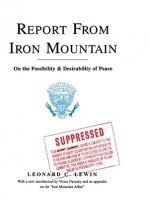
Report From Iron Mountain
15.56 € -

Lies My Teacher Told Me
22.83 € -19 % -

Liberalism and Its Critics
33.37 € -10 %
Osobný odber Bratislava a 2642 dalších
Copyright ©2008-24 najlacnejsie-knihy.sk Všetky práva vyhradenéSúkromieCookies



 21 miliónov titulov
21 miliónov titulov Vrátenie do mesiaca
Vrátenie do mesiaca 02/210 210 99 (8-15.30h)
02/210 210 99 (8-15.30h)